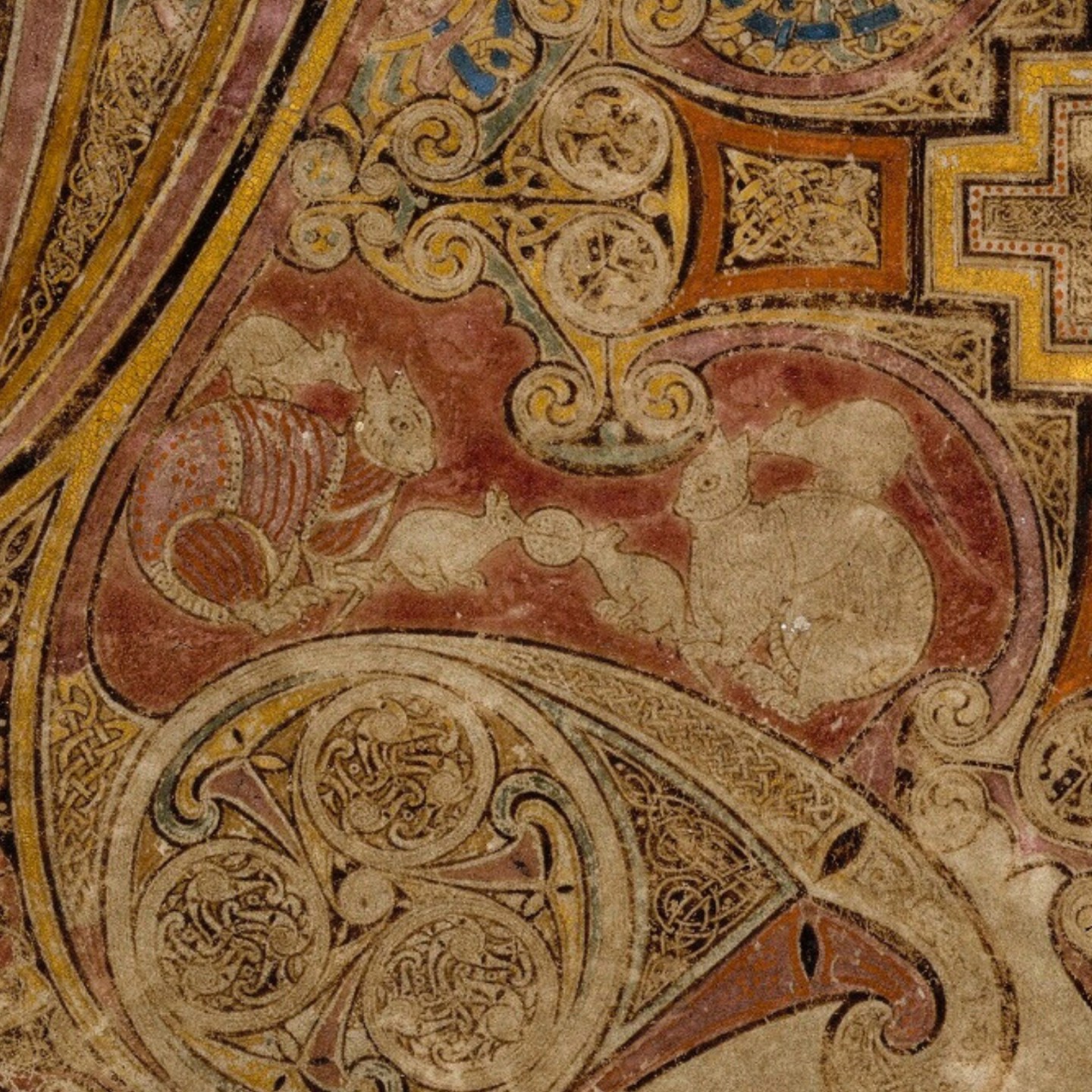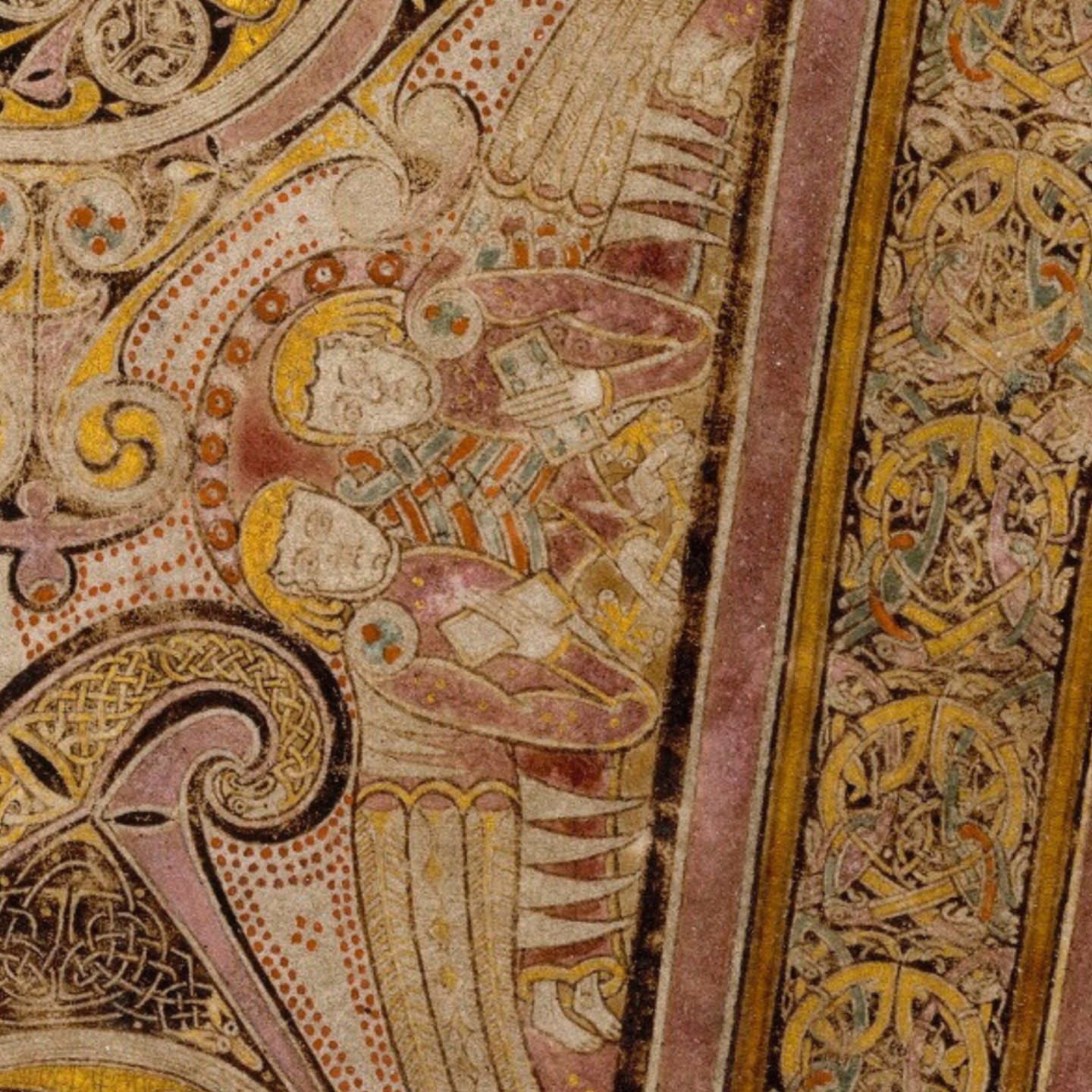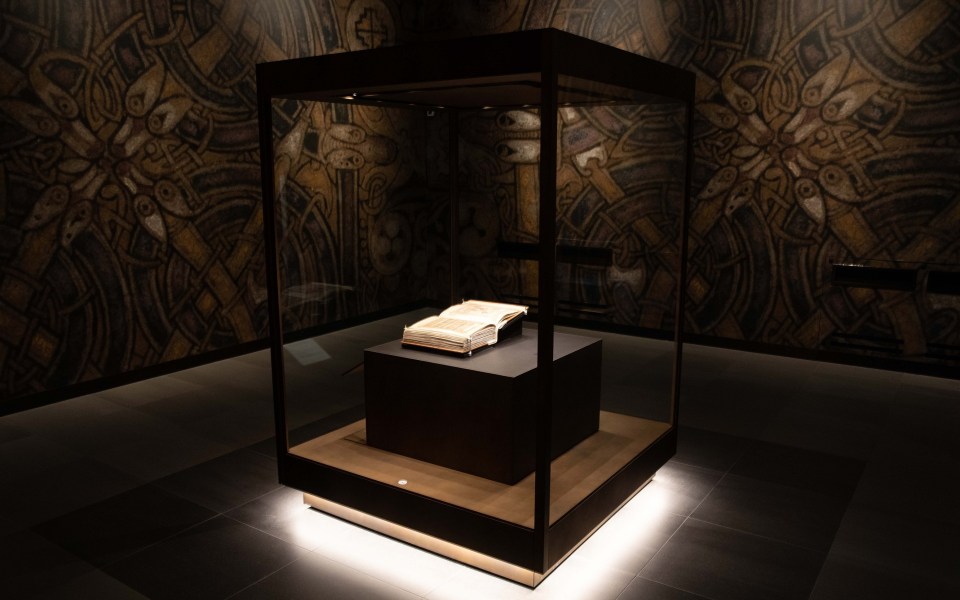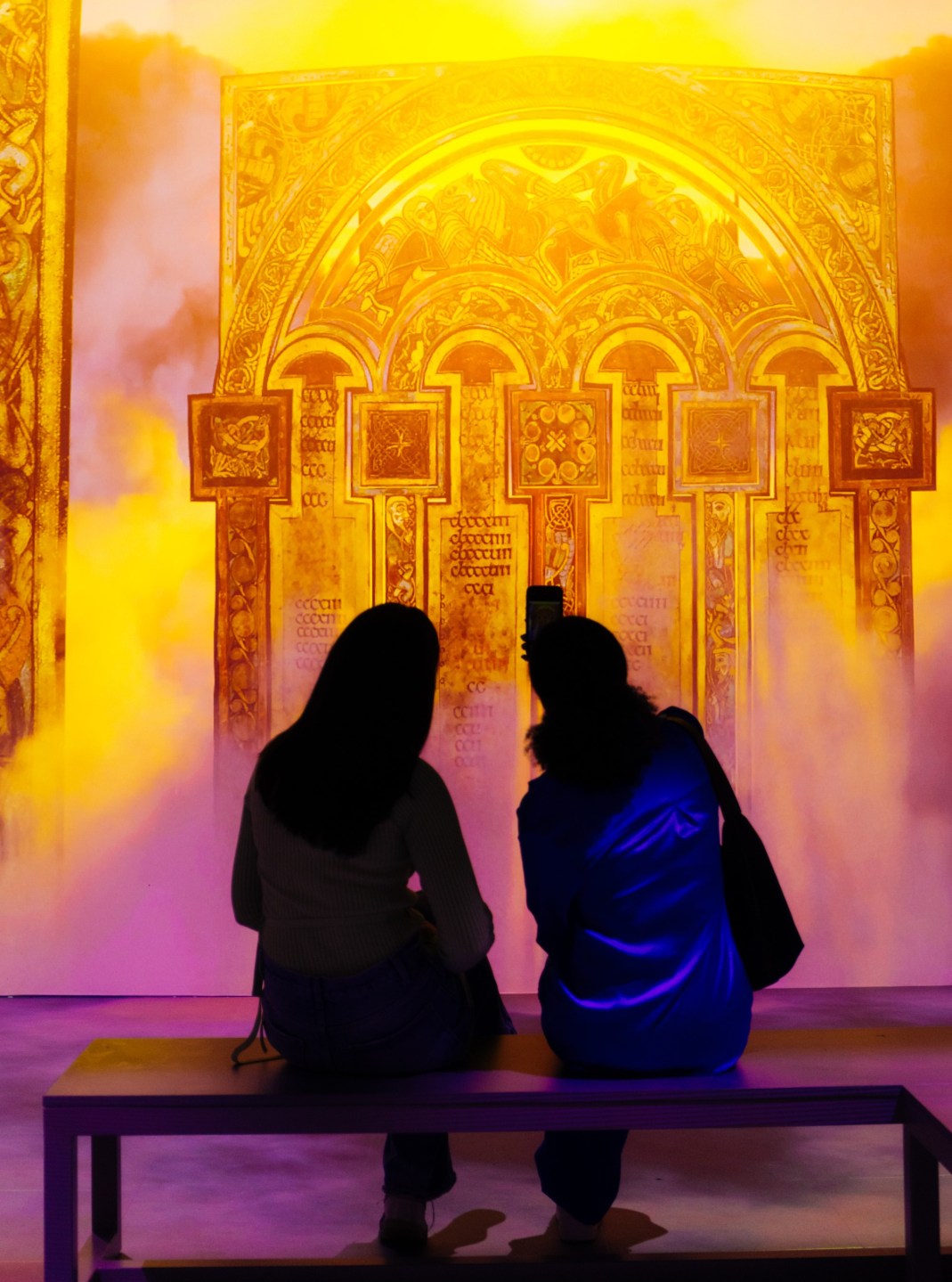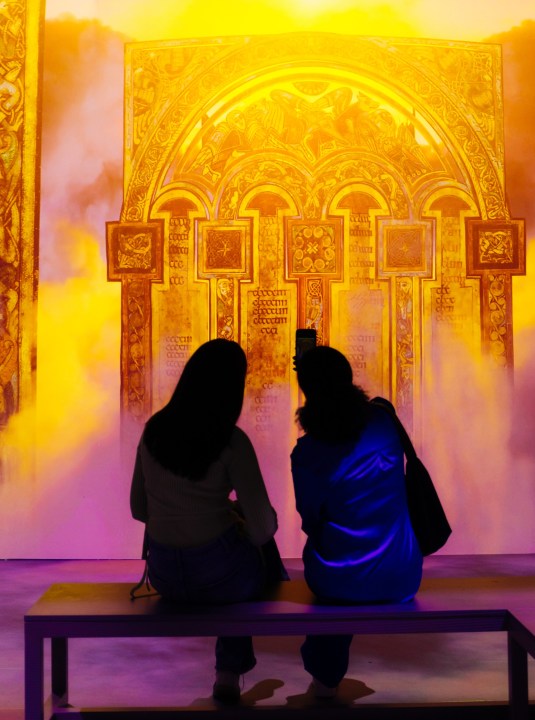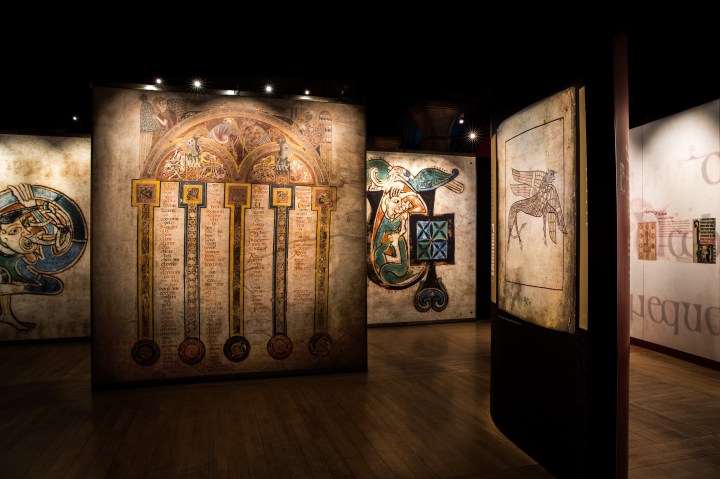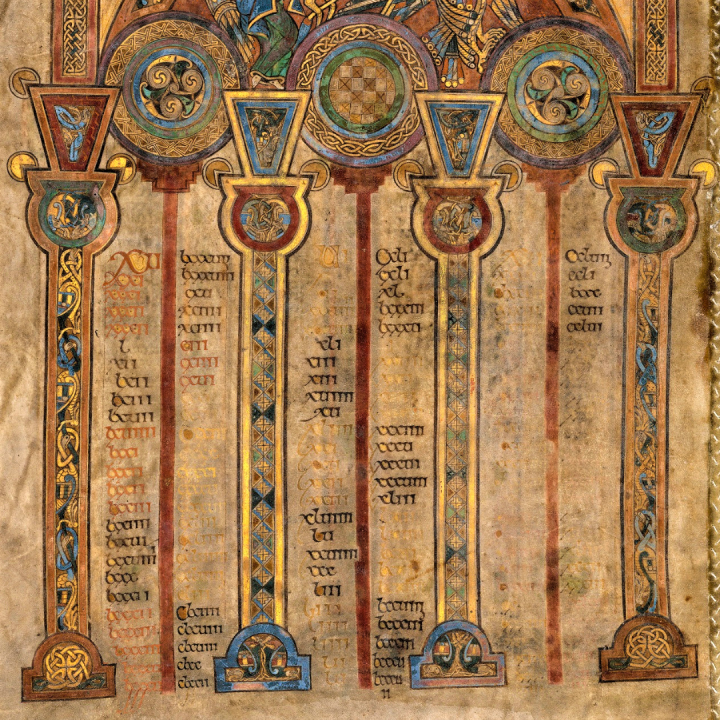

The Book of Kells is known internationally as one of the finest surviving examples of early medieval art. But what exactly gives the 9th century manuscript, held in the Old Library of Trinity College Dublin, its renowned reputation?
One of the most richly decorated pages of the Book of Kells, named the Chi Rho page, makes this quite clear. The Chi Rho page belongs to the Gospel of St Matthew, which is the first of the four gospels of the New Testament text transcribed in the Book of Kells. Its decoration exemplifies the awe-inspiring, unique beauty of the insular art style used throughout the manuscript.
Hidden among the abstract patterns of interlocking spirals and swirling interlace, the Chi Rho page features a collection of animals, insects, snakes, angels, and other figures that all have deep symbolic meaning. Only the trained eye of a medieval scribe, or the keen observation of a modern-day viewer, would be able to spot them. In this article, I will point out some of their hiding places.
What is the Chi Rho?
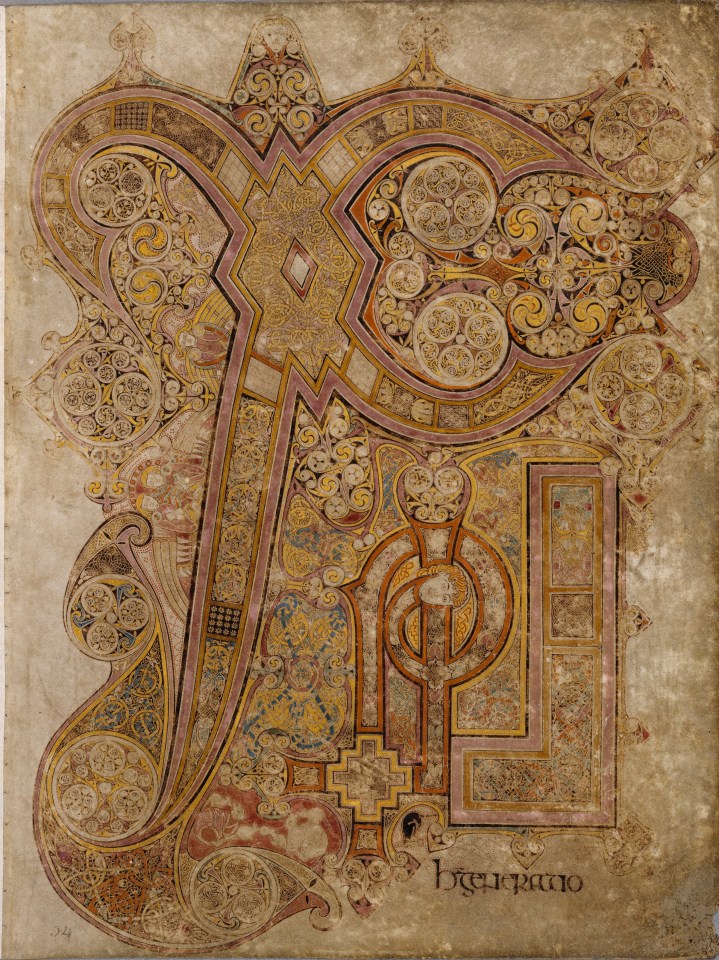
The Chi Rho is the monogram of Christ when spelled out in Greek. It is composed of the first two letters – Chi or the letter ‘X’, and the Rho or the letter ‘P’ – which overlap and combine to form the central motif of the page.
The Chi Rho is a symbol found often in Christianity, with its use dating back as far as the Roman Empire. It can also be found in some other early Christian manuscripts contemporary to the Book of Kells, such as the Book of Dimma from Co. Tipperary, and the Lindisfarne Gospels from the east coast of England.
Iconography, symbolism, and meaning
The original function of the Book of Kells was as a ceremonial object, with its elaborately decorated pages such as the Chi Rho page being put out on display during important liturgical occasions.
Most people at the time of its creation 1,200 years ago were illiterate and could not understand the Latin transcription of the four gospels contained in the manuscript. It was for this reason that the visual imagery and detailed illustrations were essential for telling the stories of the gospels and communicating the messages of Christianity.
Symbolism and meaning have always been core aspects of Irish art, even in pagan times. With the arrival of Christianity to the region around the 4th century, the old, pagan artistic tradition was adapted by monks to convey new Christian meanings in their manuscripts.
In the Chi Rho page, these (often tiny) symbolic details blend seamlessly into the overall abstract pattern, unless you know where to look!


